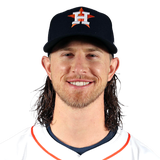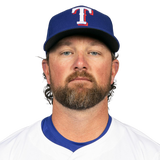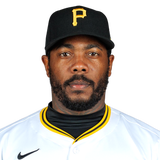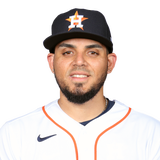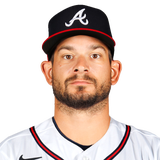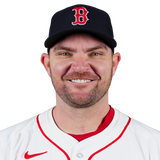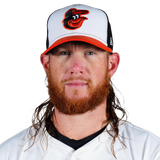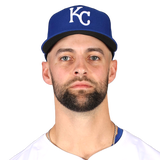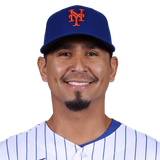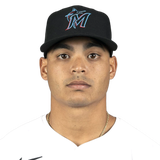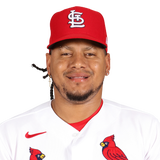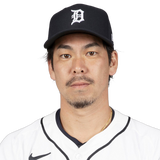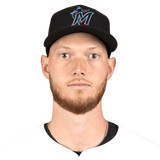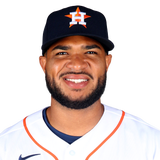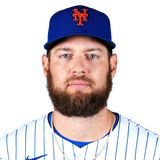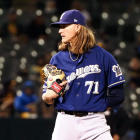2020 Fantasy Baseball Relief Pitcher Preview: Sleepers, breakouts, busts, SPARPS, rankings, and more
Should you pay up for one of the top save guys from 2019? Here's why it's not the best idea in Fantasy.
Here's a simple bit of advice when it comes to drafting relievers for your Fantasy team: Ignore last year's save totals. Saves play an outsized role in reliever value in both Roto and H2H scoring formats, but they are also notoriously tricky to predict, because so much is out of the pitcher's hands.
For instance, in 2018 Edwin Diaz led the majors with 57 saves, Wade Davis had 43 and Craig Kimbrel saved 42; Diaz led that group in 2019 saves with 26. That's a dramatic example, as all three suffered through the worst seasons of their careers, but note that Blake Treinen (fourth in 2019, with 38 saves) also suffered through a tough season and lost his job, while Kenley Jansen (tied with Treinen) saved just 33 games, his lowest total since 2013. Kirby Yates led the majors in saves in 2019 for the Padres with 41, fewer than any of the top three in 2018.
Last season was an extreme example, but relief pitcher is a notoriously difficult position to predict for about a thousand reasons. For one thing, we're dealing with perilously small sample sizes. Yates has arguably been the best reliever in baseball over the past two seasons, posting a 1.67 ERA over 123.2 innings of work — or just 27 more than Frankie Montas threw in 2019 despite serving an 80-game suspension.
So performance can be tough to predict due to the small sample sizes, but role is also tricky to pin down. More teams eschew the shut-down closer role these days, going with a committee that allows them to play matchups and save their best pitchers for the highest leverage moments. And even those teams that do intend to have one closer usually won't live with too many meltdowns in the role — a bad two weeks can cost all but the most elite options their jobs.
What that means is there is almost no margin for error for all but the top options at the position. Looking at the 2020 rankings for reliever, I don't think you can get farther than seventh in the rankings before you run out of pitchers you can feel confident will finish the season as a closer — and one of them is a SPARP (Starting Pitcher As Relief Pitcher).
The Fantasy community is going to be wary of paying for the truly elite pitchers as a result of the bloodbath we saw at the position in 2019, which means there might be value in zigging where everyone else is zagging and paying full cost for the top closers. Otherwise, you're probably better off waiting until the later rounds and taking speculative fliers on pitchers with great ratios — chances are, they'll get an opportunity to close before long.
Relief Pitcher Preview
The only real question about Hader is about role, as the Brewers have shown a preference for using him as a high-leverage fireman rather than a traditional closer. If Corey Knebel shows he is back to full strength coming off Tommy John surgery, could he start to take some of Hader's opportunities?
| ||||||||||
Yates is a shut-down reliever who plays in a great park, so as long as he remains in San Diego, he should remain an elite closer. Of course, he's also 33, so some regression in the skill set is possible at his age.
| ||||||||||
Chapman doesn't quite stand out as much as he once did, but he's managed to outlast the likes of Kimbrel and Jansen. Expect a bunch of strikeouts and a low-to-mid-2.00s ERA from the Yankees closer.
| ||||||||||
Osuna is probably the least flashy of the elite closer options, but all he does is post sub-3.00 ERAs with an elite WHIP every year while racking up saves. He'll never be the first closer off the board because he doesn't have elite strikeout rates, but he's as solid and dependable an option as you'll find.
| ||||||||||
Hand had another strong season, but his changing role lessened his impact just a bit. He threw more than one inning just seven times in 60 appearances, and as a result, his 84 strikeouts were his lowest total since 2015. Hand did miss some time late in the season with some elbow fatigue, so his days of racking up elite strikeout numbers and big innings totals are probably gone as he transitions to being a more typical closer.
| ||||||||||
Rogers took a step forward with his strikeout rate yet again in 2019, but he's been as consistent as anyone in keeping runs off the board over his past three seasons. If the Twins are willing to stick with the lefty in the ninth inning, his consistency makes him a good bet to hang on to the job.
| ||||||||||
It's been a bumpy road at times, but Giles has proven he can be as good as any closer in baseball when he's right. He wasn't right often enough in Houston, and elbow scares made him somewhat tough to rely on in 2019. But when he was on the mound, Giles was dominant. He's always had the potential for that, and if he does it for a full season, you're going to get a significant discount.
| ||||||||||
And now we get to the point in the rankings where you may be buying a closer for two weeks before they lose the role. Hendriks was incredible in 2019, sporting a 37.3% strikeout rate while taking over following Blake Treinen's struggles. Of course, he had an ERA north of 4.00 in each of his previous seasons and had been below 3.00 just once before, so skepticism is warranted. There is obvious upside with Hendriks, but you'll have to invest a lot in his limited track record.
| ||||||||||
The margin for error continues to get smaller for Jansen, who is clearly no longer an elite option at closer — he hasn't had an ERA below 3.00 or more than 82 strikeouts since his health started deteriorating after the 2017 season. The question is how long can he continue to avoid melting down. He carries substantial risk of falling off.
| ||||||||||
Diaz's 2019 was an absolute disaster, but the underlying skill set didn't change too much — he still had elite strikeout and swinging strike rates but struggled badly keeping the ball in the yard. He's a cautionary tale against taking too much from a single season of data from a reliever, but could just as easily bounce back in 2020 to be the top option in the game.
| ||||||||||
How much of a mulligan does Kimbrel get for his 2019? A frigid free agent market meant Kimbrel didn't sign until June, and he just never looked right. With a more normal offseason and spring training, you have to bet on a bounceback, though the 31-year-old was showing signs of slipping even before signing with the Cubs.
| ||||||||||
We're not even outside of the top 12 true relievers and we've hit a pitcher who has no guarantee of a closer's role. We expect Anderson will be the Rays closer — he was so absurdly dominant for them last season, why wouldn't he be? — but the Rays don't exactly stick with traditional bullpen roles. Anderson could be the best reliever in baseball, but he might only save 20 games or so.
| ||||||||||
The Red Sox won't be contenders in 2020, but they should still be competitive, and if Workman can sustain the dramatic increase in strikeout rate he saw from 2019, he has every opportunity to be an elite closer. There aren't many options below him you can say that about.
| ||||||||||
Meet The SPARPs
One way to gain an edge, especially in H2H points leagues, is to load your RP spots up with starters who are eligible at the position. This year we've got several viable options to choose from, including some with considerable upside — a couple of former aces, among them. These guys won't always be better than the best closers for Fantasy, but the potential for two-start weeks makes them worth chasing in all points leagues, where volume is all important.
Carrasco is one of my favorite sleepers at starting pitcher. He's a former top-15 starter coming off a lost season due to a leukemia diagnosis. He is expected to be healthy and back in the rotation coming spring training, and could be a cheat code as a SPARP.
| ||||||||||||||||||||
Luzardo was shut down in spring training in 2019 with a shoulder injury and ultimately pitched just 55 innings between the majors and minors as a result. Of course, he was still absolutely dominant across both levels, striking out 73 batters in those 55 innings with a 2.29 ERA. He should have a starting job locked in from Day 1, and there is top-12 starter potential here in the long run.
| ||||||||||||||||||||
A shoulder injury kept Carlos Martinez on the shelf until late May, and when he returned, it was as a reliever. He showed few ill effects from the injury, and actually emerged as the Cardinals closer in the wake of Jordan Hicks' own injury, saving 24 games along the way. It sounds like he is trying to come back as a starter for 2020, and though I might actually prefer him as the Cardinals closer, there's no denying there is upside if he stays healthy in the rotation.
| ||||||||||||||||||||
The Dodgers constantly fiddled with Maeda's role, but that shouldn't be an issue with the Twins. Maeda is always a solid option when he pitches, and there should be more opportunities for that in 2020 than ever before.
| ||||||||||||||||||||
Urias made his MLB debut back in 2016, but he won't turn 24 until August, so there's still plenty of upside here. The question, as it was last year, is whether he'll get a chance to start every fifth day, though this season, it's just about staying healthy. He flashed ace upside last season, and if he lives up to it, his status as a mid-rounder on Draft Day could make him a huge value.
| ||||||||||||||||||||
Puk threw just 36.2 innings between the majors and minors in his recovery from Tommy John surgery last season, and even though he struggled with control at times, it's easy to see why he has been such a highly regarded prospect. He racked up 51 strikeouts in those innings. He may not be in the rotation on opening day, but his high-90s fastball and wipeout slider could make him a star.
| ||||||||||||||||||||
James was arguably the minor's biggest breakout star in 2018, and he sustained most of that growth even while struggling a bit overall in 2019. There is huge strikeout potential here, and he re-worked his delivery in the hopes of fixing some of the command issues that vexed him. If he breaks into the Astros' rotation, there is star potential here — or at least, Robbie Ray potential.
| ||||||||||||||||||||
The Brewers were pretty careful with Houser, as he averaged just slightly more than four innings per start in 2019. However, he was incredibly effective after returning to the rotation in the second half, posting a 3.28 ERA with 63 strikeouts in 57.2 innings. If he can sustain that in a larger role, he could be a reliable Fantasy option, SPARP eligibility or otherwise.
| ||||||||||||||||||||
Relief Pitcher Sleeper, Breakout & Bust
Sure, it's possible that last year was just the beginning of the end for Kimbrel, but he also threw just 20.2 innings as a result of his late start and then injury. Assuming he's healthy to start the season, I'll buy a Kimbrel bounceback, especially when his price is about 70 picks later than it was before last season. Sure, the decline technically started in 2018, but he still had 96 strikeouts, an ERA of 2.74, and ERA estimators that backed it up, so it's easy to overstate how much he had apparently declined. I'll bet on him bouncing back to at least 2018 levels with a normal offseason.
| ||||||||||||||||||||
Shoulder injuries threatened to derail Urias' career before it ever really got going, but he showed last season why he was one of the most highly regarded prospects of the last decade. Few pitchers were better than Urias at limiting hard contact, and both his slider and changeup look like they could be plus secondary pitches to go along with a fastball that averaged 95 mph. We still have to see if Urias can stand up to a full-time starter's workload, because he only threw more than 80 pitches twice in 2019, but the potential is all there for him to be the next great Dodgers starter.
| ||||||||||||||||||||
We'll hopefully have more clarity when the season gets closer, but right now I have trouble justifying paying the sticker price for Hader. Yes, he probably should be the No. 1 reliever right now, but there's a lot of risk that he won't have the role he'll need to justify that cost. Of course, he is one of the few relievers who can be a must-start option even without being a closer, but between the possibility of a preseason trade, the possibility of a change in role in Milwaukee, and the possibility of a mid-season trade, there are too many ways Hader can lose his role to justify paying a fifth-round pick for him.
| ||||||||||||||||||||
So which sleepers should you snatch in your draft? And which undervalued first baseman can help you win a championship? Visit SportsLine now to get rankings for every single position, all from the model that called Kenta Maeda's huge breakout last season, and find out.



